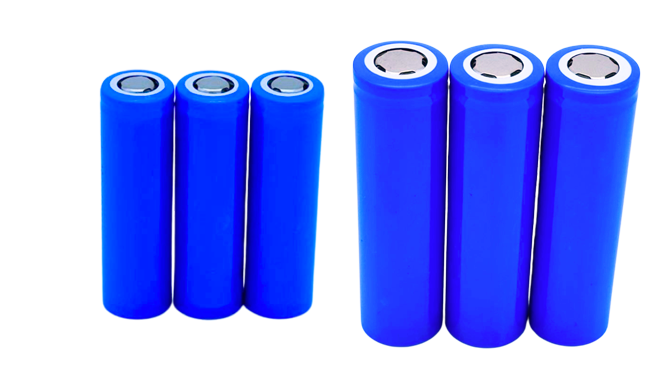How to use 18650 lithium-ion batteries without error.
1. How to charge a new battery
When using lithium batteries, it should be noted that the battery enters a sleep state after being left for a period of time, at which point the capacity is lower than normal and the usage time is shortened accordingly. But lithium batteries are easy to activate, as long as they undergo 3-5 normal charge and discharge cycles to activate the battery and restore normal capacity. Due to the inherent characteristics of lithium batteries, they have almost no memory effect. Therefore, the new lithium battery in the user's mobile phone does not require any special methods or equipment during the activation process. Not only in theory, but also in my own practice, using standard charging methods from the beginning as a 'natural activation' approach is the best.

For the issue of "activation" of lithium batteries, many opinions suggest that the charging time must exceed 12 hours and be repeated three times in order to activate the battery. The statement that 'the first three charges should be charged for more than 12 hours' is clearly a continuation of nickel batteries such as nickel cadmium and nickel hydrogen. So this statement can be said to have been a misconception from the beginning. There is a significant difference in the charging and discharging characteristics between lithium batteries and nickel batteries, and it can be clearly stated that all the serious formal technical materials I have reviewed emphasize that overcharging and overdischarging can cause huge damage to lithium batteries, especially liquid lithium-ion batteries. Therefore, it is best to charge according to standard time and methods, especially not for over 12 hours of ultra long charging. Usually, the charging method described in the phone manual is the standard charging method suitable for the phone.
In addition, lithium battery phones or chargers will automatically stop charging after the battery is fully charged, and there is no so-called "trickle" charging that lasts for more than 10 hours with nickel chargers. That is to say, if your lithium battery is fully charged and placed on a charger, it will still be charged for nothing. And none of us can guarantee that the characteristics of the battery's charge and discharge protection circuit will never change and the quality will be foolproof, so your battery will be hovering on the edge of danger for a long time. This is also another reason why we oppose long charging.
In addition, another aspect that cannot be ignored is that lithium batteries are also not suitable for over discharge, which is also detrimental to lithium batteries. This leads to the following question.
DOD stands for Depth of Discharge. From the table, it can be seen that the number of rechargeable cycles is related to the depth of discharge, and the cycle life at 10% DOD is much longer than that at 100% DOD. Of course, if converted to the actual total charging capacity: 10% * 1000=100, 100% * 200=200, the latter's complete charging and discharging is still better. However, the statement made by the previous netizen needs to be corrected: under normal circumstances, you should charge the battery according to the principle of using up the remaining battery before charging. But if your battery cannot last the entire day on the second day, you should start charging in a timely manner. Of course, if you are willing to carry the charger to the office, that's another matter.
And when you need to charge to cope with important events that are expected to cause busy communication, even when the battery still has a lot of remaining power, you just need to charge in advance because you haven't really lost "1" charging cycle life, which is "0. x" times, and often this x is very small.
The principle of recharging after the remaining battery power is not to go to extremes. A widely circulated saying, like long charging, is "try to use up the battery of your phone as much as possible, preferably with automatic shutdown". This approach is actually only used on nickel batteries to avoid memory effects, unfortunately it has also been passed down in lithium batteries today. There was an example of someone who continued to use their phone without charging it even after receiving a warning of low battery level and continued to use it until it automatically shut down. As a result, the phone in this example did not respond during subsequent charging and startup, and had to be sent to customer service for repair. This is actually due to the low voltage caused by excessive discharge of the battery, resulting in the inability to have normal charging and startup conditions.
Therefore, all the practices of pursuing 12 hour ultra long charging and using lithium battery phones for automatic shutdown are wrong. If you have previously followed incorrect statements, please correct them in a timely manner, perhaps it is not too late.
E-Mail: inquiry@fentbattery.com
Tel: 0086 20 3901-1403
Address: No.3, Dongli Road, Xili, Dongyong Town, Nansha District, Guangzhou City, China
Copyright@ China lithium ion battery manufacturers & suppliers & producers | Lithium Battery Factory & Company-BATTSYS Sitemap